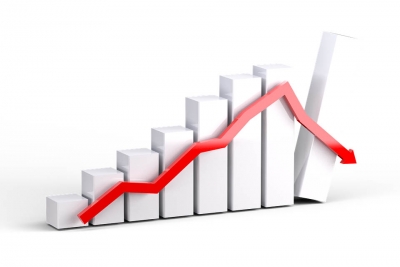
New Delhi/Chennai, Feb 28 (IANS) India’s economic growth fell, for the second consecutive quarter, to 4.4 per cent in October-December period of the current financial year, owing to weak demand and high inflation, as per data released by the Statistics and Programme Implementation Ministry on Tuesday.
Reacting to the numbers, CARE Ratings Chief Economist Rajani Sinha told IANS: “The GDP (gross domestic product) growth of 4.4 per cent is marginally lower than our expectations. While moderation in GDP growth in Q3 FY23 was expected, the continued contraction in the manufacturing sector comes as a negative surprise.”
On the expenditure side, while the consumption momentum has continued, the fall in investment to GDP ratio to around 32 level from 34 in the previous quarter is concerning. While exports have continued to weaken, with imports also slowing down, the net exports have been less of a drag in Q3 compared to the previous quarter, she added.
According to her, with external demand conditions remaining weak, it is critical that domestic demand should accelerate.
Improving rural demand and rising rural wages are the positive developments for aggregate demand.
“However, there is expected to be some fizzling out of the pent up demand seen in the last few quarters. Government focus on capex and improving intent of the private sector to invest should be supportive of investment demand. We expect GDP growth to moderate to 6.1 per cent in FY24,” Sinha added.
According to Acuite Ratings & Research’s Chief Analytical Officer Suman Chowdhury, while there is a lack of momentum in rural demand and weakness in exports, it is partly offset by the steady demand for goods and services in the urban economy.
With some support from the base factor, this will help the economy to notch up a print close to 7 per cent in FY23.
“Going ahead into the next fiscal however, the factors that will play an important role are the impact of higher interest rates on urban demand, the stability of the monsoon, and the absence of the base factor; we have kept our GDP growth forecast for FY24 at 6 per cent for now without factoring in any additional risks from monsoon and external factors,” Chowdhury said.
The GDP growth was 6.3 per cent in the September-quarter of 2022-23. The second quarter growth itself was almost half of 13.2 per cent growth seen in the April-June quarter of the current fiscal.
The Reserve Bank of India (RBI) had suggested a growth rate of 4.4 per cent for the last quarter of 2022-23, however that projection was based on the annual GDP projection of 6.8 per cent by the central bank.
The first advance estimate of the GDP, released last month, had suggested a 7 per cent growth for 2022-23.
According to the second advance estimate released on Tuesday, the 7 per cent growth for the current fiscal has been retained.
–IANS
vj/vd










